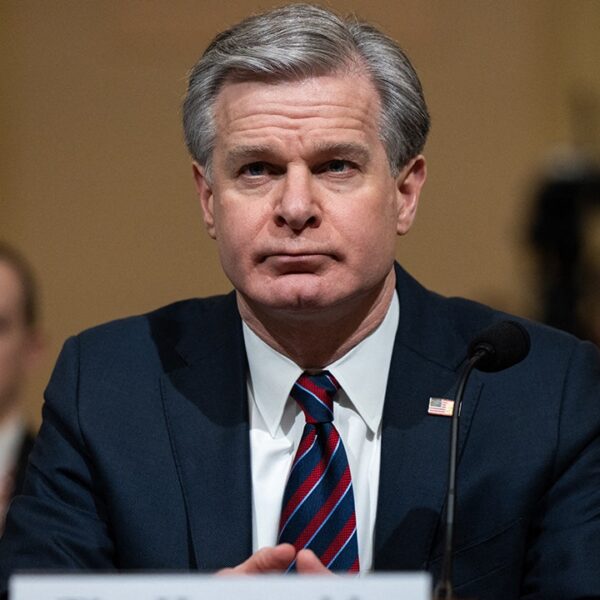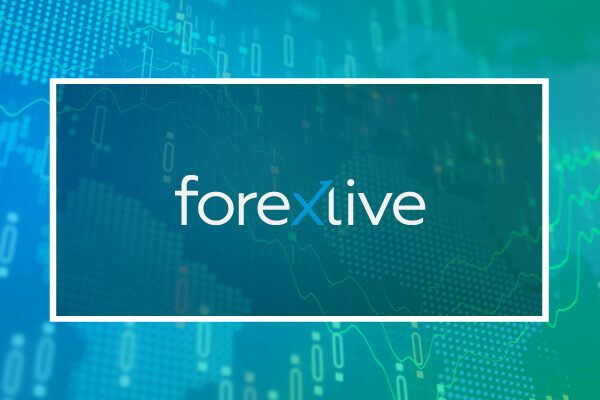ACRES Commercial Realty Corp. (NYSE:ACR) Q2 2024 Earnings Call Transcript August 1, 2024 10:00 AM ET
Company Participants
Kyle Brengel – VP of Operations
Mark Fogel – President and CEO
Eldron Blackwell – CFO
Andrew Fentress – Chairman
Conference Call Participants
Stephen Laws – Raymond James
Chris Muller – Citizens JMP
Operator
Good day, ladies and gentlemen, and welcome to the Second Quarter 2024 ACRES Commercial Realty Corp. Earnings Conference Call. Currently, all participants are in a listen-only mode. Later, we will conduct a question-and-answer session with instructions to follow at that time. [Operator Instructions] As a reminder, this call is being recorded. I would now like to introduce your host for today’s conference, Kyle Brengel, Vice President of Operations. Please go ahead.
Kyle Brengel
Good morning and thank you for joining our call. I would like to highlight that we have posted the second quarter 2024 earnings presentation to our website. This presentation contains summary and detailed information about the quarterly results of the company.
Before we begin, I want to remind everyone that certain statements made during this call are not based on historical information and may constitute forward-looking statements. When using this conference call, the words believes, anticipates, expects, and similar expressions are intended to identify forward-looking statements. Although the company believes that these forward-looking statements are based on reasonable assumptions, such statements are based on management’s current expectations and beliefs and are subject to several trends, risks, and uncertainties that could cause actual results to differ materially from those contained in the forward-looking statements. These risks and uncertainties are discussed in the company’s reports filed with the SEC, including its reports on Forms 8-K, 10-Q, and 10-K, and in particular the risk factor section of its Form 10-K. Listeners are cautioned not to place undue reliance on these forward-looking statements, which speak only as of the date hereof. The company undertakes no obligation to update any of these forward-looking statements.
Furthermore, certain non-GAAP financial measures may be discussed on this conference call. Our presentation of this information is not intended to be considered in isolation or as a substitute to the financial information presented in accordance with GAAP. Reconciliation of non-GAAP financial measures to the most comparable measures prepared in accordance with Generally Accepted Accounting Principles are contained in the earnings presentation for the past quarter.
With me on the call today are Mark Fogel, President and CEO; and Eldron Blackwell, ACR’s CFO. Also available for Q&A is Andrew Fentress, Chairman of ACR.
I will now turn the call over to Mark.
Mark Fogel
Good morning, everyone, and thank you for joining our call. Today, I will provide an overview of our loan operations, real estate investments, and the health of the investment portfolio, while Eldron Blackwell will discuss the financial statements, liquidity condition, book value, and operating results for the second quarter of 2024. Of course, we look forward to your questions at the end of our prepared remarks.
The ACRES team continues to execute on our business plan by selectively originating high-quality investments, actively managing the portfolio, and continuing to focus on growing earnings and book value for our shareholders. Loan payoffs during the period were $71.2 million and net funded commitments during the quarter were $9.3 million, producing a net decrease to the loan portfolio of $61.9 million. The weighted average spread of the floating rate loans in our $1.7 billion commercial real estate loan portfolio is now 3.75% over one month term SOFR rates.
The portfolio generally continues to perform, demonstrating sound and consistent underwriting and proactive asset management. The company ended the quarter with $1.7 billion of commercial real estate loans across 64 individual investments. At June 30th, there were 12 loans rated four or five, which represented 21% of the par value of our portfolio, an increase of 4% respectively, as compared to the end of first quarter 2024, and our weighted average risk rating increased from 2.6 at March 31st to 2.7 at June 30th.
In April 2024, we resolved an $8 million whole loan, collateralized by a retail property located in Elizabeth, New Jersey, that was a risk-rated 5 asset and had been in default since December 2021. We went through a lengthy foreclosure and eventual bankruptcy process in the state of New Jersey that resulted in the sale of the asset just above par value. Plus, we were able to recoup a majority of the legal expenses that we incurred. This successful completion is a credit to our patience to work through the legal process and achieve the value that we have placed on the asset.
We continue to manage several investments in real estate that we expect to monetize at gains in the future. These anticipated gains will be offset by NOL carry forwards and we expect to retain the equity and reinvest potential gains into our loan portfolio. One such investment, our student housing development at Florida State University, is on track to receive a certificate of occupancy in early August in time for the school year. The successful completion of this over $125 million project is a credit to our project development and asset management teams as well as our unaffiliated partners. The two new buildings are 95% pre-leased for the school year, and the project includes amenities for a modern student living environment. We will provide updates in future quarters on the monetization of this asset.
In summary, the ACRES team continues to be focused on the overall quality of the investment portfolio, including investments in real estate with the goal of improving credit quality and recycling capital into performing categories.
We will now have ACR’s CFO, Eldron Blackwell, discuss the financial statements and operating results during the second quarter.
Eldron Blackwell
Thank you and good morning, everyone. GAAP net income allocable to common shares in the second quarter was $1.7 million or $0.21 per share. Included in that income is an increase to current expected credit losses or CECL reserves of $1.3 million or $0.17 per share, as compared to CECL reserves during the first quarter of $4.9 million. The increase to the general CECL reserves is primarily driven by macroeconomic factors putting pressure on CRE evaluation offset by a decrease in modeled credit risk. The total allowance for credit losses at June 30th was $35 million which represents 2.04% or 204 basis points on our $1.7 billion loan portfolio at PAR and comprised $4.7 million in specific reserves and $30.3 million in general credit reserves.
Earnings available for distribution or EAD for the second quarter was $0.51 per share as compared to $0.16 per share for the first quarter. The difference primarily being a $0.33 increase in real estate operations and an $0.11 decline in G&A operating expenses offset by an $0.08 run rate decline in net interest income resulting from net payoffs and to a lesser extent, loan modifications that occurred during the quarter and late in the first quarter.
GAAP book value per share was $27.20 on June 30th versus $27.25 on March 31st. During the second quarter, we used $1.6 million to repurchase 115,000 common shares at an approximate 50% discounted book value. There was approximately $4.1 million remaining on the Board approved program at quarter-end. Available liquidity at June 30th was $98.4 million, which comprised $89.6 million of unrestricted cash and $8.8 million of projected financing available on unlevered assets. Our GAAP debt to equity leverage ratio slightly decreased to 3.6 times at June 30th from 3.7 times in March 31st, and our recourse debt leverage remains consistent at 1.1 times at both June 30th and March 31st.
With that, I will turn the call to Andrew Fentress for closing remarks.
Andrew Fentress
Thank you, Eldron. We’re pleased with the direction of the portfolio. Our team has been working diligently with our borrowers to create positive outcomes during this rate cycle. We’re working to deploy available capital into accretive loan opportunities. And lastly, as Mark mentioned, we’re in the process of monetizing our equity investments, returning the capital to the loan portfolio.
This concludes our opening remarks. I’ll now turn the call back over to the operator for questions.
Question-and-Answer Session
Operator
[Operator Instructions] We’ll take our first question from Stephen Laws with Raymond James. Please go ahead. Your line is open.
Stephen Laws
Yeah, hi. Good morning. Nice quarter. Good to see the solid earnings and rebounding seasonally from Q1. Wanted to start with the real estate portfolio. Can you maybe provide a little more color on potential asset sales in the back half of the year? I know you mentioned the Florida State asset in your prepared remarks. If you kind of force-rank these, which of the ones do you think are likely to be sold sooner rather than later? And is that the key to kind of turn on new origination opportunities? The portfolio’s been running off for the last year or so and curious to know when you think the portfolio size kind of troughs and starts to grow again.
Mark Fogel
Thanks, Stephen. This is Mark. Look, we can’t really determine at this juncture when we will sell the assets. It’s really a matter of where the market is or executing on a good sale. We do know that our goal is to try to sell several of these assets prior to the end of 2025. The FSU asset probably is the closest 1. It’s opening up. We’ll work with our partners to determine whether or not now is the right time to sell and monetize that asset. And we’re always looking to the market to try to determine when and if it’s the right time to sell and if the properties are operating in the right place and cap rates are cooperating with us. Yeah, we’re actively looking at new originations. I think the market is getting stronger and stronger for good opportunities. The CLO market is starting to come back a little bit. We have liquidity and I think all the elements are starting to come together to get a little bit more active on the origination front.
Stephen Laws
Great. Appreciate the color there. Can you touch maybe a little bit on the watch list loans. Obviously, there’s some net shrinkage of the portfolio, which pushed that number up a little bit, but then you’ve resolved one 5, had a couple of new loans go on the watch list. So can you talk about expected resolutions there, particularly of the two 5 rated loans?
Mark Fogel
I can. In fact, the one of the 5 loans we foreclosed on at the beginning of Q3, an office building in Austin where we have a basis that we believe below our value. That’s an asset just like the Broad Street deal that we just resolved where we feel like we will get our money back and perhaps more upon a sale. So that one is charging towards resolution. It’s been in our portfolio for quite some time, I think since 2019. And then the other 5 asset is just a mezz loan on an office building in Pittsburgh, where we have a full specific reserve. We’re working actively with the first mortgage special service or to try to determine an outcome, but that’s still sort of an unknown. And look, the four assets are good assets. It’s good real estate. They’re just a little bit behind plan, but we expect to have good resolution on all of those assets.
Stephen Laws
Great. And then, I noticed in your slide deck, the interest rate cap is 86%, but I believe almost half of those caps mature in the third quarter. Can you talk about discussions with borrowers, whether you expect them to buy new caps, if they’ll continue to perform on their loan without caps, how do you expect the maturity of those interest rate caps to impact portfolio performance?
Mark Fogel
I think to date we’ve been very successful in working with the borrowers to put new interest rate caps in place and I expect that to continue. As I’ve said in prior quarters, in every one of those loans where interest rate caps are expiring there is a significant amount of real equity invested by the borrowers and a lot to protect. So we believe that we will be successful in working with them to put new caps in place. And at the same time, we’ve been flexible. We work with them on either buying a cap or maybe depositing dollars into an interest reserve in lieu of a cap. But to date, we’ve been very successful in working closely with our borrowers to ensure that these assets are in the right place with respect to caps.
Stephen Laws
Great. And I’m guessing that the forward curve shifting a little has probably made those caps a little more affordable. Lastly, can you talk about considerations around capital and returning it to shareholders? You’ve got the NOLs, which you’ve been able to use. You’re buying back stock, still very accretive to book, although not as accretive as with the stock up 40% year-to-date, roughly. How do you think about a dividend? With that potentially helping close the gap towards valuation of peers that have similar asset mix and performance, yet they trade it at higher stock multiple. So how do you think about dividend versus repurchase versus continuing to use the NOLs?
Andrew Fentress
Yeah, this is Andrew. I’ll take that one, Steve. The basic objective for capital deployment is a 15% return on equity target. So that’s what we’re striving for as a minimum in the loan book. And to the extent we can do better than that through share repurchases, we’re doing that additionally. We’re limited in what we can repurchase just in terms of volume. And as you’ve seen, we’ve been able to build up a reasonable amount of liquidity. And so I think you’ll see both happening, both repurchases and deployment into the loan book for the balance of this year. It has been and continues to be an objective of ours to reinstate the dividend. What we’re hoping to do is to have the assets that were purchased, sold, that equity capital then redeployed back into the loan book, driving higher EAD and then taking that EAD and distributing it to shareholders in the form of a dividend. So that’s the thought process, it’s ongoing. There’s some timing considerations around the last two items. Mark mentioned our objective is to sell these assets and redeploy, The timing is a little bit uncertain, but it’s definitely our mission to do that.
Stephen Laws
Great. Well, I look forward to watching you execute that playbook and appreciate your time this morning.
Andrew Fentress
Thanks.
Operator
[Operator Instructions] We’ll take our next question from Chris Muller with Citizens JMP. Please go ahead. Your line is open.
Chris Muller
Hey, guys. Thanks for taking my questions and congrats on a nice quarter. So it looks like leverage is moving lower as the CLO is de-levering. Should we expect that to continue in the near term until lending ramps back up? And just any thoughts on timing for a new CLO? Is that more a 2025 type thing? Thanks.
Mark Fogel
Yeah, thanks, Chris. This is Mark. Yeah, we expect that the CLOs will continue to de-lever. It’s just natural runoff of the portfolio, and that may actually increase even more as the 10-year treasury drops, if it continues to drop, as people in our portfolio look to the permanent loan markets, Fannie, Freddie, to refinance the loans that they have with us on the bridge side. Yes, we are actively looking at the CLO market to try to determine whether or not it’s in a place where we will execute on a new CLO. And obviously, once the old CLOs get to the point where they’re de-levering — they’ve de-leveraged to the point where the return on equity is not where we need it to be or want it to be, certainly a CLO execution is in the cards as long as the market’s cooperating.
Chris Muller
Got it. That’s helpful. And then maybe one for Eldron. How much, I guess, potential upside to book value is there remaining from the tax loss carry forward? Or have you guys already been able to capture the bulk of that? I know you used to put a slide in the deck, but I think you took that out a couple quarters ago. So I’m just curious about what that potential upside remaining is. Thanks.
Eldron Blackwell
I think we’ve capped, well, it’s to be said, but I think we’ve captured the majority of that as Mark and Andrew laid out. Majority of that’s going to be coming from the sale of our FSU property. We don’t know what that value is currently, but that’s, for the most part, where the value in our NOLs are going to be [lagging on] (ph) forward.
Chris Muller
Got it, so it’ll be chunky going forward, that makes sense.
Eldron Blackwell
It’ll be chunky, that’s right.
Chris Muller
Thanks for taking the questions.
Mark Fogel
Thanks, Chris.
Operator
[Operator Instructions] And there are no further questions on the line at this time. I’ll return the call to our speakers for any additional or closing remarks.
Andrew Fentress
This is Andrew. Thanks again for everyone participating in this morning’s call. We greatly appreciate the questions as always, and we’re always available for additional follow-ups as they arise. Enjoy the rest of the summer, everybody, and we’ll look forward to speaking to you in the fall. Thanks.
Operator
This does conclude today’s program. Thank you for your participation and you may now disconnect.












